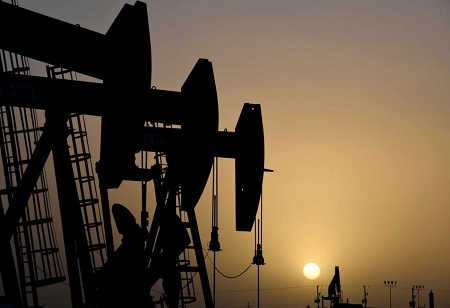A change is on the horizon for oil demand, with India ready to eclipse China as the most important driver of global growth — and potentially the last, as the world shifts to a greener future.
A swelling population, which has likely already surpassed that of China, will support to underpin that growth along with consumption trends. India’s transition from traditional gasoline and diesel-fueled transport is expected to lag other regions, whereas China’s adoption of electric vehicles is skyrocketing.
While India is unlikely to replicate the mammoth scale of China’s expansive oil network — the nation’s daily crude consumption is triple that of its neighbor — traders and producers looking to tap into diminishing global demand growth would be betting on the South Asian nation into the next decade.
“India was always going to exceed China in a matter of time in terms of being the global demand growth driver, mainly due to demographic factors like population growth,” said Parsley Ong, the head of Asia energy and chemicals research at JPMorgan Chase & Co. in Hong Kong.
China’s economic awakening at the beginning of the century transformed the nation into a powerhouse consumer of commodities from crude to metals and grains, providing a boost to resource-rich countries across the world. For oil, the end of the boom times is approaching, with top refiner China National Petroleum Corp. recently calling a peak to Chinese oil consumption around 2030.
The change of demand growth leader appears even closer. Industry veteran Ed Morse, the head of commodities research at Citigroup Inc., says China’s rebound from years of Covid restrictions would likely be the nation’s “last hurrah” for demand. Viktor Katona, the lead crude analyst at data intelligence firm Kpler, reckons India’s growth will surpass China from 2026. He also expects Indian oil demand to peak much later in 2036.
“China’s role as a global oil demand growth engine is fading fast,” said Emma Richards, a senior analyst at Fitch Solutions Ltd. in London. Over the next decade, China’s share of total emerging market oil demand growth will slip to 15%, from almost 50%, while India’s share will double to 24%, she said.
India is already playing a more vital role in the oil market following the invasion of Ukraine more than a year ago. The South Asian nation has become a major consumer of Russian crude, turning the OPEC+ producer’s oil into fuels that are often shipped to other regions such as Europe and the US.
It’s not the first time India has been discuss about as the new center of oil demand growth, with similar predictions made in the middle of the last decade. Should it materialize this time, the transition to the top spot would likely be far from smooth and bogged down by bureaucracy.
State-run refiners have been slow at modernizing their operations, and still rigidly follow the old and cumbersome process of issuing tenders for spot purchases of oil, rather than taking a more agile and flexible approach of negotiating and signing deals directly with counter-parties.
Still, India’s fast-growing crude appetite would position the South Asian nation as an attractive opportunity for overseas traders and producers over the longer term, stated Vandana Hari, the founder of Vanda Insights in Singapore.
India has lofty ambitions to transition its industries considering transport to greener energy options, but the nation is lagging other major nations, meaning its reliance on fossil fuels is likely to endure for much longer.
In contrast, China’s adoption of electric vehicles has been fast, an ominous sign for long-term gasoline demand in the world’s biggest car market. EV sales in China nearly doubled to 6.1 million units in 2022, compared with 48,000 vehicles for India in the same period, as per a report.
